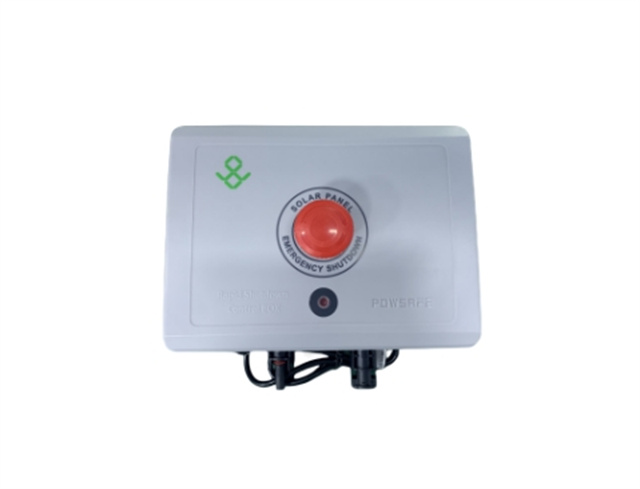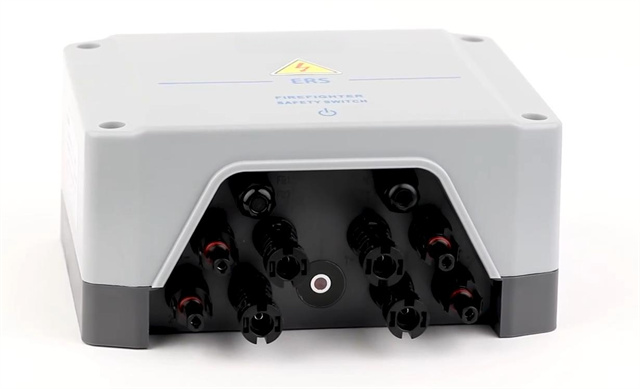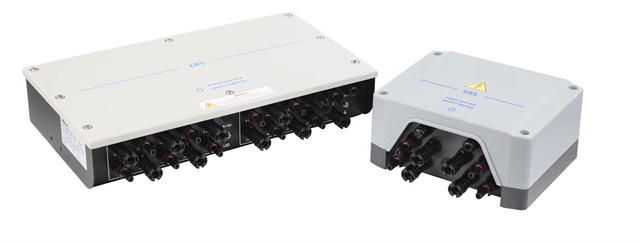Author:BLD Solar Energy SystemFROM:Solar System Converter Manufacturer TIME:2023-10-31
Efficient Installation of PV Rapid Shutdown for Solar Arrays

As solar power becomes increasingly popular, the installation of photovoltaic (PV) systems has seen significant growth. However, safety measures need to be in place to protect both installers and emergency responders from potential electrical hazards. One such safety requirement is the installation of a PV rapid shutdown system, which quickly de-energizes the system in case of an emergency or maintenance. In this article, we will explore the efficient installation of PV rapid shutdown for solar arrays, highlighting key considerations and best practices.

Before diving into the installation process, it is crucial to have a solid understanding of what PV rapid shutdown entails. Rapid shutdown is a mechanism that reduces the voltage within the array rapidly. It ensures that emergency responders can safely work around the PV system without being exposed to live circuits. PV rapid shutdown solutions use various technologies, such as module-level electronics or rapid shutdown devices, to achieve fast de-energization.

Compliance with relevant codes and standards is critical during the installation of PV rapid shutdown systems. In the United States, the National Electrical Code (NEC) Article 690.12 specifies the requirements for rapid shutdown. Installers must ensure that their systems adhere to these guidelines to meet safety regulations. Additionally, local building and fire codes may have additional requirements that need to be considered.
Proper system design and component selection are essential for an efficient installation of PV rapid shutdown. The system design should consider factors such as the array size, string configuration, and distance between modules and rapid shutdown equipment. Installers must carefully select rapid shutdown devices that are compatible with the PV system and meet the necessary safety standards.
Correct wiring and cable management play a crucial role in the efficient installation of PV rapid shutdown systems. All connections must be securely made and properly insulated to prevent damage or electrical faults. Cables should be neatly organized and protected from potential environmental hazards. Additionally, labeling the wiring system helps to identify components and simplify future troubleshooting or maintenance.
Effective communication and coordination among installers, system manufacturers, and other stakeholders are vital for successful PV rapid shutdown installations. Installers must collaborate with manufacturers to ensure that the selected devices are properly integrated into the overall PV system. Clear communication channels and regular updates throughout the installation process help to address any issues promptly and ensure a smooth installation.
Thorough testing and commissioning are indispensable steps in the installation of PV rapid shutdown systems. Installers must conduct comprehensive tests to verify that the rapid shutdown devices perform as intended. This includes verifying the shutdown time, functionality of emergency switches, and communication between system components. The commissioning process ensures that the entire system meets safety requirements and operates correctly.
Regular maintenance and inspections are crucial for the long-term efficiency and safety of PV rapid shutdown systems. Installers should develop a maintenance schedule that includes periodic inspections and testing of the system. This helps identify any potential issues or degradation early on and allows for timely repairs or replacements. Maintaining proper documentation throughout the system's lifetime is also essential for future reference and compliance.
Finally, providing adequate training and education to installers and stakeholders is essential. Properly trained personnel understand the importance of PV rapid shutdown and ensure its correct installation. Installers should stay updated with the latest industry standards and best practices through training programs and workshops. Continuous education helps improve installation efficiency and enhances overall safety in the solar industry.
Efficient installation of PV rapid shutdown for solar arrays is critical to ensure the safety of installers and emergency responders. By understanding the concepts of rapid shutdown, adhering to codes and standards, and following best practices, installers can successfully implement this vital safety measure. From system design to ongoing maintenance, every step of the installation process must be conducted with precision and attention to detail. By prioritizing safety and staying informed about advancements in the field, we can continue to harness the power of solar energy while minimizing potential risks.
